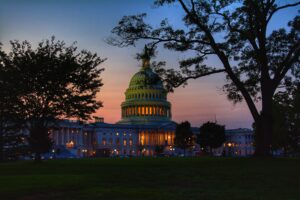We have an agreement, which means we can begin to criticize it and plan for the investment and economic effects. The bill is a litany of half measures, no long term solutions, and likely sets up a couple of battles in the next congress. Congress punted on evictions, postponing medical payments until early next year, and there is still an ongoing debate regarding the amount it is issuing in direct payments. The looming liability concern for businesses is still being discussed. Here is what got done: Individual payments for many Easily the most asked about part of the legislation is the direct payment to individuals that begin going out today. The passed version included $600 going to individual adults with an adjusted gross income of up to $75,000 a year based on 2019 earnings. An increased amount will be going to those that file as heads of households who earn up to $112,500 and couples (or someone whose spouse died in 2020) who make up to $150,000 a year would get twice that amount. This continuing political battle to raise this number from $600 to $2000 is still going on today, passing with all democrat and some republican support in the house. The senate is questionable as a few Republicans have endorsed the idea, including the two high profile candidates in Georgia – Loeffler, and Purdue. McConnell has blocked the bill as of 10:20 am as I am writing this article. Unemployment benefits With almost 7% of Americans still unemployed and millions more under-employed, Congress acted to extend multiple programs to help those out of work, albeit at less generous levels than in the spring. Too much of the surprise of those tracking the issue, the final bill doesn’t include the expanded coffers many anticipated and is considered a skinny agreement. The agreement would include: 11 weeks, providing a lifeline for hard-hit workers until March 14. Up to $300 per week (half the amount provided by the original stimulus bill in the spring) Pandemic Unemployment Assistance — a program aimed at a broad set of freelancers and independent contractors — for the same period, providing an additional $100 per week Better late than never, the expanded agreement is a second band-aid for those Americans that continue to seek employment as employers have halted hiring. The near term negative effect of unemployment cannot be understated. But as we look out to the intermediate (6 months) range seems to hold a fantastic capacity for consumers to unwind pent up spending in short order. The unemployment insurance isn’t expected to be much but will support many Americans who put more and more spending on credit cards in the second half of the year. Funds for Child Care, Schools, and Colleges School budgets have been uniquely impacted by the pandemic and have left their outlook for the year to some impaired: $82 billion for education and education service providers, That figure includes $54 billion for stabilizing K-12 schools It also includes $23 billion for colleges and universities $10 billion for the child care industry K-12 schools saw more support than the initial package in dollar terms, and even more than the proposed package in November; however, the funds still fall short of what both sectors say they need to blunt the effect of the pandemic and to support operations in 2021. The majority of school districts transitioned to remote learning and as a result, we were asked to make expensive adjustments to accommodate while seeing enrollment drops upend budgets. Colleges and universities are also facing financial constraints amid rising expenses and falling revenue. Child care centers that are struggling with reduced enrollment or closures will get help to stay open and continue paying their staff. The funds are also supposed to help families struggling with tuition payments for early childhood education. Funding for broadband infrastructure The stress on national broadband has been higher than ever, remote work and education on top of the expanded requirements of technologies like Zoom, have put a major strain on national networks. The legislation includes $7 billion for expanding access to high-speed internet connections. Much of this spending was anticipated in an infrastructure bill, that has been brought forward as a result of the pandemic. Two major points in this part: Half this stimulus is earmarked to cover the cost of monthly internet bills by providing up to $50 per month to low-income families. $300 million for building out infrastructure in underserved rural areas and $1 billion in grants for tribal broadband programs. (Part of another infrastructure bills spending prior to the pandemic) Extension of aid for small businesses (PPP) The bill puts forward $285 billion for additional loans to small businesses under the Paycheck Protection Program. This renews the program created under the initial stimulus legislation and is largely an extension of dollars that were repurposed. Funding for vaccines and eldercare facilities The source of concern early in the pandemic and the ongoing requirements to overhaul the elderly care facilities are addressed by this legislation as it sets aside nearly $70 billion for a range of public health measures targeted at elderly care facilities and the distribution of the vaccine. This breakdown includes: $20 billion for the purchase of vaccines $8 billion for vaccine distribution $20 billion to help states continue their test-and-trace program Earmarked funds to cover emergency loans aimed at helping hard-hit eldercare centers. A ban on surprise medical bills The Bill supports efforts to help Americans avoid unexpected medical bills that can result from visits to hospitals. The legislation also makes it illegal for hospitals to charge patients for services like emergency treatment by out-of-network doctors or transport in air ambulances, which patients often have no say about. This measure has had some long time support from Democrats and was criticized for not including some provision in the Affordable Care Act. Rental protections One more month of halting evictions is pushed out to the end of January. The Department of Housing and Urban Development


